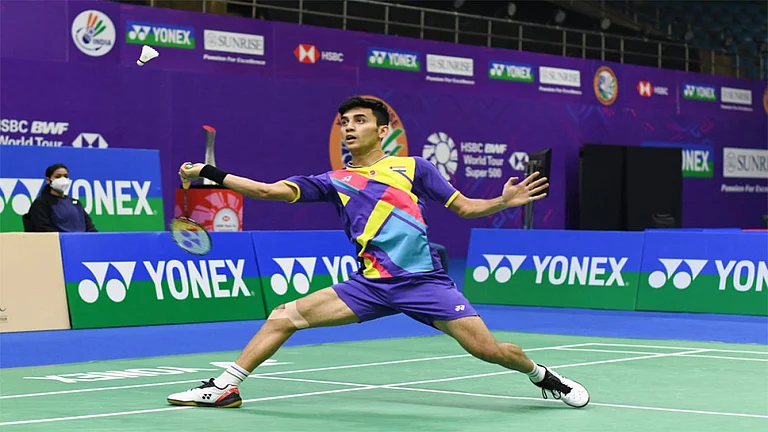On a cold February morning in 1959, a tall, square-jawed American nervously boarded a jet to flee Prague. He was aware that his escape could be foiled at any moment. Circumstance and opportunity had aligned to pry open this window; he was anxious it might slam shut. Once airborne, Morton Nadler finally felt safe. He had waited a long time for this.
For the last few years, Morton Nadler had been a de facto prisoner of the Czechoslovak government. Until now, he had been disallowed from leaving the country. During a refuelling stop in Greece, he briefly considered striding up to the counter to declare, ‘I’m an American. I’ve just escaped from Prague. Take me to the American Embassy.’ The moment passed, as did the flicker of daring, and he swatted the idea away. Nadler was in the delicate situation of being under suspicion by his country of birth, the United States, and country of adopted citizenship, Czechoslovakia. The thought of what might befall those who vouched for him back in Prague and fear of the American government gripped his tongue and nudged him aboard the connecting flight to India.
Upon landing in Calcutta, he was driven along a dusty road lined with ramshackle huts to the Indian Statistical Institute. Calcutta’s winter, in contrast to Prague and matching his mood, was ‘mild and pleasant’. Amidst the mango grove and ponds that dotted the garden campus, Nadler would spend the next fifteen months working on India’s first computers.
Planning launched India’s globetrotting quest for computers. They represented a solution to the problem of big data, a problem that arose as a consequence of the decision to pursue centralized economic planning. India entered the computer age as only the second Asian nation to acquire digital computers. These machines began another expansionary stage in the growing knowledge infrastructures and data capacities of the state. Planning the economy demanded a variety of statistical indicators regarding Indian material life. Endeavours like the National Sample Survey now ensured a sudden deluge of such information. The magnitude of data generated was beyond the country’s computational abilities unless computers were harnessed. Apart from fulfilling a need the computer had other allures. Once invented, they quickly came to symbolise ultimate technological mastery and numerical omniscience, a swoon-inducing combination for technocrats. For techno-utopians like the Professor [P.C. Mahalanobis of the Indian Statistical Institute] and the rest of India’s scientific elite, computers were dizzyingly expensive dream toys…

Mahalanobis wasn’t alone in his faith in the computer’s ability to transform economic management. At least two very prominent economists, Oskar Lange and Nobel laureate Tjalling Koopmans, suggested that computers provided a solution to the computational complexities of centralised economic planning. This was part of a major debate among economists, referred to as the economic calculation or socialist calculation debate. In the interwar years, advocates of mostly unregulated capitalism such as Ludwig von Mises, Friedrich Hayek and Lionel Robbins argued that planned economies were fundamentally incompatible with efficient resource allocation because they spurned the only instrument that guaranteed it — the market’s famed invisible hand. The socialist economist Oskar Lange responded that ‘rational economic accounting’ was certainly possible under socialism since planners only needed to solve a series of simultaneous equations. Hayek retorted that since making thousands of such calculations in any reasonable timeframe was impossible, efficient planning was a chimera. But the invention of the computer changed the debate, according to Koopmans and Lange. The latter saw vindication for socialist planning in the computer. As he put it, ‘My answer to Hayek and Robbins would be: so what’s the trouble? Let us put the simultaneous equations on an electronic computer and we shall obtain the solution in less than a second.’ Mahalanobis, it appears, was a silent partisan.
The Professor tried to harness computers towards the creation of an idealised economy in which numerical omniscience allowed optimal outcomes. In marked contrast to the global centres of advanced computing, the first use found for computers in India was in development, not the military. India’s ability to develop a computer programme didn’t, however, depend solely on domestic factors. As an impoverished buyer of computers on the international market, India’s image in the optics of the Cold War mattered a great deal. Transnational transfer of technology involving duelling superpowers and a non-aligned nation was bound to ruffle Cold War feathers. American and Soviet perceptions of India’s political slant imposed real limitations on computer developments in India….
Machine Dreams
From when he first laid eyes on an electronic computer, Mahalanobis was smitten. Amazed and convinced of its utility to his country’s development he was soon involved in a lengthy quest to bring these ‘electronic brains’ to India. In March 1946, while in the United States, Mahalanobis heard the polymathic genius John von Neumann make a presentation on a computer under development at the Institute for Advanced Study in Princeton. When the Professor broached the possibility of developing a computer in India, von Neumann was open to the idea but warned that the cost of building it would be steep. However, von Neumann assured Mahalanobis, that once the first model had been built, subsequent ones would come with a moderate price tag of ‘only 30 or 40 thousand dollars’…
Early the following year, with his country’s independence yet months away, Mahalanobis saw a digital computer in operation for the first time. During a visit to Harvard University, he was given a tour of the Mark I by computer pioneer Howard Aiken with whom he spent much of the day. The reason Mahalanobis hadn’t seen this machine on earlier trips was that it was still a ‘Navy secret’. The Professor proceeded to Princeton University, where he renewed discussions about computing with von Neumann. While in Princeton, Mahalanobis also made the pilgrimage to its most famous resident, Albert Einstein, who expressed hope that the transfer of power from British to Indian hands would be smooth.
Increasingly occupied with national income assessment, sample surveys and planning in India, Mahalanobis believed that computers would prove vital. Digital computers could perform complex mathematical calculations at hundreds of times the speed of humans, and the Professor realized that they would be of tremendous help in processing data generated from the National Sample Survey. Feeding this raw information into a computer, planners would be able to parse trends in the Indian economy in a fraction of the time it would otherwise take. Another major application for computers in the realm of planning was modelling the economy, through inter-industry input-output tables….
Never burdened by any formal training in economics, Mahalanobis was instinctively predisposed to this kind of mathematical abstraction. It was the distillation of a technocrat’s vision. Quite apart from these applications, the computer was also an object of status and fantasy. It was chased after as much for the fabulous possibilities it evoked as it was for the more modest capabilities it delivered. Rare, notoriously expensive and seemingly boundless in potential, it promised the future and appeared to belong to it.
(Excerpted from Planning Democracy: How A Professor, An Institute, And An Idea Shaped India by Nikhil Menon (Penguin Random House India), with permission from the author. Nikhil Menon is an Assistant Professor of History at the University of Notre Dame.)





















